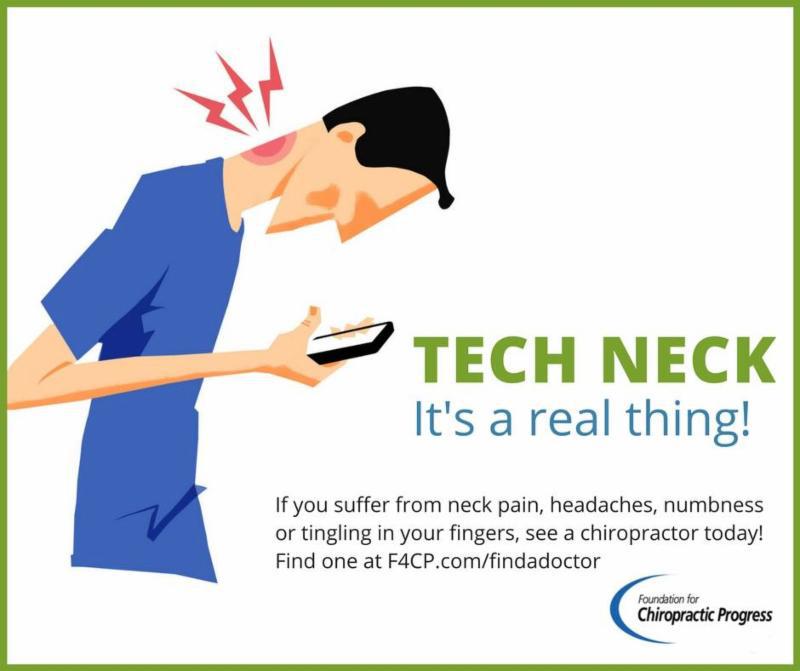Tech Neck Chiropractic Care
Hunching over and staring down at a screen can cause some major issues. If you’re suffering from any of the conditions below, call us today to schedule your chiropractic appointment.

The Benefits of Chiropractic Care After an Auto Accident.

Clear Lake Chiropractor Comments: Unfortunately 20 – 50 million people a year are injured or disabled in auto accidents. The majority of these injuries are what is called “soft tissue” injuries. Soft tissue injuries are injuries that occur to muscles, tendons & ligaments, not hard tissues like bones.
After an accident, one of two things will happen. The accident is either severe enough that you are taken by an ambulance to the hospital to treat your injuries or you will go home to see if your discomfort gets better. If you go to the hospital, when you are released from the hospital you will be told to follow up with a doctor. If you go home to wait and see if the discomfort will go away, give it a couple days for the pain to go away. If the pain is still persisting after 2-3 days, then you should have a doctor look at your spine to see what has occurred.
The type of doctor you see will determine what type of care you receive and the long term results you will get. If you go to your average medical doctor, he will treat you with medications and if that doesn’t work, then refer you out for physical therapy. If you go to a spine doctor, either an orthopedic or neurosurgeon, then they will typically order an MRI to see if you need surgery or epidural spinal injections (ESI’s). The best doctor to see is an experienced chiropractor. Chiropractors see musculoskeletal injuries every day. Because they see a variety of spinal and extremity (knee, shoulder, wrist, elbow and ankle) complaints on a regular basis, they are able to see injuries that are not obvious to doctors that don’t regularly treat them. A quality doctor of chiropractic has a variety of techniques and therapies to help reduce the inflammation quickly and minimize the formation of scar tissue. By minimizing your need for drugs, you can understand how you are truly healing and prevent the chance of injuring yourself by possibly being over medicated. Medications can also have adverse side effects that lead to other problems. A good chiropractor will also give you home based exercises and stretches to help increase your range of motion (ROM). These exercises and stretches will help you quickly return to how you were before the accident.
If your doctor of chiropractic does not see an improvement in your complaints in 2 -4 weeks, he or she can order an MRI or make the appropriate referral to another doctor to help co-manage your condition.
Dr. Ward Beecher practices at Beecher Chiropractic Clinic at 1001 Pineloch, Ste 700 Houston, TX 77062. You can schedule an appointment at BeecherChiropractic.com or by calling (281) 286-1300. If you have any questions regarding this blog, please comment below!
Doctor of Chiropractic
Chiropractic professionals that receive a minimum of 7 years of higher education are Doctors of Chiropractic.

3 Stretches for Lower Back Pain
Dr. Ward Beecher walks you through 3 stretches to help with lower back pain.
1. Laying on back, pull knee up to chest.
2. Laying on back, roll knee over opposite leg while keeping shoulder flat.
3. While on stomach, keeping hips flat on surface, push upper body up.
Check out the video to learn how to preform each of these stretches.
Reduced Medicare Costs With Chiropractic Care
More chiropractic care visits are associated with fewer visits to a primary care physician for medicare patients.

Epidural Steroid Injections (ESI’s) And Spinal Manipulation

Houston Chiropractor Comments: Most of the time when patients come into our office, chiropractic spinal manipulation (adjustments) and therapy makes their pain go away. Sometimes patients have gotten their spines too irritated and inflamed and we have to co-manage their problem with a medical doctor who treats them with epidural steroid injections (ESI’s). Sometimes the patient is referred to us by their pain management doctor to perform manipulations on patients post ESI since we have a history of excellent results.
Epidural Steroid Injections (ESI’s) are a common form of treatment for back and leg pain since the 1950’s. Most doctors agree that the results are temporary, usually lasting a week to a year. Sometimes the injections work well by themselves, but typically they work best when combined with chiropractic manipulation of the spine followed by stretches and exercises.
Commonly I will get asked if it is safe to get adjusted after the ESI. It is not only safe, but beneficial. As the inflammation and irritation is decreased as a result of the ESI, it is now helpful to remove the irritation that caused the pain to begin with. With the chiropractic adjustments, followed by stretches and exercises, the patient can increase their joint flexibility and spinal strength. This will help to prevent the problem from reoccurring. Sometimes it will take up to 3 shots, typically spaced 2 weeks apart, to get the full benefit. Your medical provider will be able to let you know how many injections that you need. Make sure to get treated by your doctor of chiropractic after your shots to make sure that you receive the maximum benefit of your care.
Dr. Ward Beecher practices at Beecher Chiropractic Clinic at 1001 Pineloch, Ste 700 Houston, TX 77062. You can schedule an appointment at BeecherChiropractic.com or by calling (281) 286-1300. If you have any questions regarding this blog, please comment below!
Stretches to Help With Forearm, Hand, and Wrist Pain
Dr. Ward Beecher walks you through some wrist stretches that will help with forearm, wrist, and hand pain. Often these are thought of as Carpal Tunnel Syndrome. However, the majority of the time it’s the muscles joints and side of the wrists that need to be properly stretched. Use these stretches to help with your pain. If you have other questions call us today to discuss you’re pain and how chiropractic care can help.
Chiropractors are Associated With Fewer Opioid Prescriptions
The more chiropractors per capita, the more access patients have to chiropractic care, which then leads to fewer opioid prescriptions filled. Call us today to discuss how chiropractic care can benefit you.

Is No Pain, No Gain A Smart Plan?

Clear Lake Chiropractor Comments: As people begin to act on their New Year resolutions, they have a tendency to think that pain should be expected. This is not true. As you increase your activity to reach your new health goals remember 6 things.
- Warming up – Warm muscles are far less likely to tear than cold ones. So, if you’re going out for a run, walk a bit first, then trot before you go into full running mode. Stretching your muscles, especially the ones you’re going to be using, also helps you to avoid injury.
- Cooling down – The same is true when you end an exercise session. You can’t just automatically stop when you are finished with your workout because this may cause an unsafe drop in blood pressure. Using running as an example- slow down to a walk again before you just stop your exercise. It’s also important to stretch out those muscles again.
- Staying hydrated – Water, water, water! Drinking water before, during and after a workout replaces fluids lost from sweating and exertion, especially important in warm or hot weather.
- Listening to your body – Don’t continue your workout if suddenly you find yourself in pain. Your body is trying to tell you something. Ignoring it can only make it worse, so stop whatever you’re doing and give your body a few days to recover before starting up again.
- Learning the proper technique for the workout – Make sure you know the proper technique for any new workout routine you are attempting for the first time. Correct technique is as important as warming up to avoid injury.
- See your chiropractor – If you notice pain in your spine or joints that persist more than 3 days, see your chiropractor to make sure that your exercise did not misalign a joint. It is easier to fix a problem early than to wait and possibly cause other compensation problems.
Dr. Ward Beecher practices at Beecher Chiropractic Clinic at 1001 Pineloch, Ste 700 Houston, TX 77062. You can schedule an appointment at BeecherChiropractic.com or by calling (281) 286-1300. If you have any questions regarding this blog, please comment below!
Safely Managing Seniors in Pain
For seniors living in chronic spine and joint pain, chiropractic care offers a safe alternative. Give us a call today to discover if chiropractic care is right for you.


